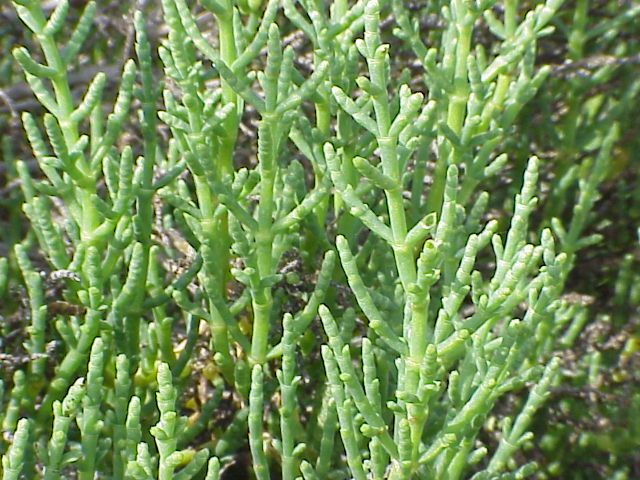Pickleweed, in the scientific world is known as the Salicornia europeae variety rubra. It is a halophylic plant meaning it loves salt. It's Hawaiian name is akulikuli kai.
Pickleweed's remain dormant on the soils surface. It's reporduction season is usually in the begining of spring so the young plant can grow throughout the summer. When winter comes the ground freezes and the plant dies leaving seeds waiting for the spring thaw and the life cycle repeats itself again.
Pickleweed has an opposite shoot branching pattern, unlike its neighbor the iodine bush. At a glance it seems as if it has no leaves; however, its central, water conducting stem is surrounded by succulent, salt-solution storing leaf tissues. Photosynthesis is carried out inside the cells of this leaf tissue. Pickleweed is also known as the “cactus” of
